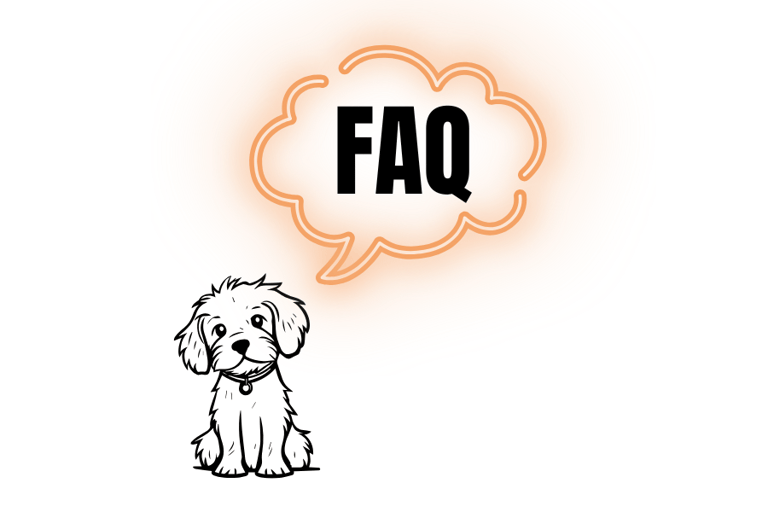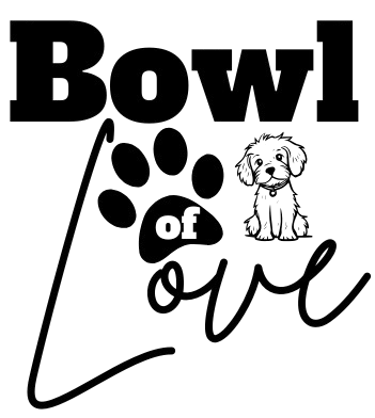The Role of Omega-3s and Healthy Fats in Your Dog's Diet
Essential Nutrients for Optimal Canine Health
DOG NUTRITION TIPS
10/2/20257 min read
The Role of Omega-3s and Healthy Fats in Your Dog's Diet
At Bowl of Love, we sometimes recommend trusted products. If you choose to purchase through our links, we may earn a small commission at no additional cost to you. Thank you for supporting our mission to bring healthier food choices to dogs everywhere.
Your dog's body cannot make enough omega-3 fatty acids on its own, yet these essential fats play a crucial role in maintaining your pet's overall health. Omega-3 fatty acids are essential for a dog's skin, coat, joint, and brain health, making them one of the most important nutrients to include in a balanced canine diet. These essential fats support everything from reducing inflammation to promoting a shiny coat and healthy joints.
Many dog owners wonder how to properly incorporate these beneficial fats into their pet's meals. The key lies in understanding which types of omega-3s provide the most benefits and how to balance them with other healthy fats in the diet.
This guide will explore the science behind omega-3s for dogs, identify the best dietary sources, and provide practical tips for optimizing fat intake. Pet owners will learn how to make informed decisions about supplements, treat options, and daily feeding practices that support their dog's long-term health and vitality.
Understanding Omega-3s and Healthy Fats for Dogs
Dogs need specific types of fats in their diet to stay healthy and strong. Omega-3 fatty acids are essential fats that dogs cannot produce in sufficient amounts and must get from food or supplements.
Types of Omega-3s and Fats Found in Dog Diets
The three main omega-3 fatty acids in dog nutrition are EPA, DHA, and ALA. EPA (eicosapentaenoic acid) and DHA (docosahexaenoic acid) come from marine sources like fish oil and algae.
ALA (alpha-linolenic acid) comes from plant sources such as flaxseed and chia seeds. Dogs can convert small amounts of ALA into EPA and DHA, but this process is not very efficient.
Marine-based omega-3s provide the most direct benefits. Fish oil contains both EPA and DHA in forms that dogs can easily use. Marine microalgal oil offers a clean and sustainable source of these nutrients.
Other healthy fats include omega-6 and omega-9 fatty acids. Omega-6 comes from sources like chicken fat and vegetable oils. Omega-9 fatty acids help support brain and heart health while providing energy.
The ratio between omega-3 and omega-6 fats matters more than the total amount. Most commercial dog foods contain plenty of omega-6 but lack enough omega-3.
How Omega-3s Affect Canine Health
Omega-3 fatty acids support joints, skin, heart and cognitive function in dogs. These fats work as natural anti-inflammatory agents throughout the body.
Skin and coat health shows the most visible benefits. Dogs eating diets rich in omega-3s develop flake-free, non-itchy skin and lustrous, glossy coats. The fats help maintain healthy skin cell membranes.
Joint health improves because omega-3s reduce inflammation in cartilage and surrounding tissues. Older dogs with arthritis often show better mobility when getting adequate omega-3s.
Brain function benefits from DHA, which makes up a large part of brain tissue. Puppies need DHA for proper brain development. Senior dogs may maintain better cognitive function with regular omega-3 intake.
Heart health improves through better circulation and reduced inflammation in blood vessels. Omega-3s play crucial roles in cell membranes, immune system function, and circulatory system health.
Essential vs. Non-Essential Fatty Acids
Essential fatty acids cannot be made by a dog's body and must come from food. Omega-3 and omega-6 fatty acids fall into this category. Dogs will develop health problems without adequate amounts.
Omega-3 fatty acids are anti-inflammatory fats that dogs derive from food or supplements because their bodies need them to thrive. A deficiency leads to dull coats, dry skin, and poor immune function.
Non-essential fatty acids can be produced by the dog's body from other fats and nutrients. Omega-9 falls into this category. While beneficial, dogs can survive without getting omega-9 directly from food.
The body prioritizes essential fatty acids for critical functions first. Non-essential fats get used for energy and less vital processes. This makes getting enough omega-3s particularly important.
Most dog foods contain adequate omega-6 levels but fall short on omega-3 content. Pet owners often need to add omega-3 supplements or choose foods specifically fortified with these essential fats.
Optimizing Your Dog's Diet with Omega-3s and Fats
Getting the right omega-3s into your dog's diet requires choosing quality sources and understanding proper dosing. Different life stages need different amounts of healthy fats for peak health.
Sources of Omega-3s and Healthy Fats for Dogs
Fatty fish provide the best natural omega-3 sources for dogs. Sardines offer omega-3 fatty acids at low cost and come from wild-caught sources.
Top Fish Sources:
Salmon (cooked, boneless) (If you are going to get salmon in a can, remember to get them in water, make sure they are wild caught, and they are boneless, like these Safe Catch Wild Pacific Pink Salmon that we put in our dogs' bowls every week from Amazon.)
Sardines (canned in water) (These sardines from Amazon are our favorite.)
Mackerel
Anchovies
Cooked salmon provides EPA and DHA without added seasonings or oils. Remove all bones before serving.
Plant-based options include flaxseed oil and chia seeds. These contain ALA omega-3s that dogs convert to EPA and DHA less efficiently than fish sources.
Other Healthy Fat Sources:
Fish oil supplements (We use these Zesty Paws supplements from Amazon for our dogs every day.)
Krill oil
Marine algae oil
Coconut oil (small amounts) (Better Body Foods are our favorite.)
Fresh or frozen fish works better than processed fish treats. Rotate different fish types to provide variety and prevent potential mercury buildup.
Choosing High-Quality Supplements and Foods
Quality omega-3 supplements should list EPA and DHA amounts clearly on labels. Look for third-party testing certificates that check for heavy metals and toxins.
Supplement Quality Markers:
Cold-pressed extraction
Dark glass bottles
Expiration dates within 2 years
Refrigerated storage requirements (Our favorite Rubbermaid containers from Amazon.)
Fish oil supplements lose potency quickly when exposed to heat and light. Store them in cool, dark places or refrigerate after opening. (Zesty Paws has a great omega-3 supplement for your furry friend.)
Commercial dog foods with omega-3s often use fish meal or fish oil. Check ingredient lists for specific fish types rather than generic "fish" listings.
Red Flags in Products:
No EPA/DHA amounts listed
Clear plastic containers
Strong fishy smell
Past expiration dates
Marine microalgal oil provides plant-based omega-3s for dogs with fish allergies. This option works well for sensitive stomachs.
Liquid supplements mix easily into food. Capsules can be punctured and squeezed over meals for better absorption.
Balancing Fat Intake for Different Life Stages
Puppies need higher fat percentages for brain development and growth. Adult dogs require moderate amounts for maintenance. Senior dogs benefit from increased omega-3s for joint health.
Life Stage Fat Requirements:
Puppies: 8-15% of total calories
Adult dogs: 5-8% of total calories
Senior dogs: 5-10% of total calories
Active dogs burn more calories and can handle higher fat intake. Less active dogs need reduced amounts to prevent weight gain.
Omega-3s help regulate metabolism and maintain healthy weight in dogs of all ages. They support proper body composition.
Large breed puppies need careful fat balance to prevent rapid growth that damages joints. Medium and small breeds tolerate higher fat levels better.
Dosing Guidelines by Weight:
Under 25 lbs: 300-500mg EPA/DHA daily
25-50 lbs: 500-800mg EPA/DHA daily
Over 50 lbs: 800-1200mg EPA/DHA daily
Start with lower doses and increase gradually. Watch for loose stools or digestive upset when adding new fats to the diet.
Frequently Asked Questions
Dog owners often wonder about the specific benefits of omega-3s and how to properly add these fats to their pet's diet. Understanding dosage, deficiency signs, and food selection helps ensure dogs receive optimal nutrition.
What are the benefits of omega-3 fatty acids for dogs?
Omega-3 fatty acids provide multiple health benefits for dogs. These essential fats support brain function, heart health, and immune system strength.
The fats help reduce inflammation throughout the body. This can ease joint pain and stiffness in older dogs or those with arthritis.
Omega-3 fatty acids improve skin, coat, and joint health in dogs. They also support eye health and may help with cognitive function in senior pets.
How can omega-3 fatty acids improve a dog's skin and coat health?
Omega-3s help create a healthy skin barrier that locks in moisture. This reduces dryness, flaking, and itching that many dogs experience.
These fats also promote a shiny, soft coat. Dogs often develop a lustrous appearance within 6-8 weeks of starting omega-3 supplements.
The anti-inflammatory properties help calm irritated skin conditions. This includes hot spots, allergic reactions, and general skin sensitivity.
What is the recommended daily amount of omega-3 for dogs?
The recommended omega-3 dosage varies by dog size and weight. Small dogs typically need 20-50 mg per day, while large dogs may need 200-400 mg daily.
Most veterinarians suggest 20-30 mg of combined EPA and DHA per pound of body weight. A 50-pound dog would need approximately 1,000-1,500 mg per day.
Dog owners should consult their veterinarian before starting supplements. The vet can recommend the exact amount based on the dog's specific health needs.
Are there any risks associated with supplementing a dog's diet with omega-3s?
Excessive omega-3 intake can cause digestive upset in some dogs. Symptoms include loose stools, vomiting, or stomach discomfort.
High doses may also affect blood clotting ability. Dogs taking medications or preparing for surgery should avoid omega-3 supplements unless approved by a vet.
Poor quality supplements can contain contaminants or rancid oils. Pet owners should choose reputable brands that test for purity and freshness.
What are the signs of omega-3 deficiency in dogs?
Dogs with omega-3 deficiency often have dry, flaky skin. Their coat may appear dull, brittle, or lack its normal shine.
Excessive shedding and slow wound healing are common signs. Some dogs develop frequent skin infections or hot spots.
Joint stiffness and inflammation may worsen without adequate omega-3s. Dogs might show less interest in physical activity or have difficulty getting up.
How can I identify dog foods that are high in omega-3 and omega-6 fatty acids?
Dog food labels list ingredients by weight, with the heaviest first. Look for salmon, sardines, mackerel, or other fatty fish in the top five ingredients.
Flaxseed, chia seeds, and fish oil indicate omega-3 content. Some foods also list the specific amounts of EPA and DHA on their guaranteed analysis panel.
Quality dog foods maintain a proper omega-6 to omega-3 ratio of 5:1 to 10:1. Foods with too many plant oils may have excessive omega-6 levels.








Connect
Reach out for support and inquiries.
Subscribe
contactbowloflove@gmail.com
© 2025. All rights reserved.
